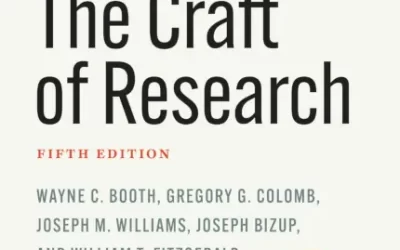
It’s been a hard year for many people. The stress and isolation caused by the COVID-19 pandemic has put strain on the mental health of all of us but particularly those who were already suffering from mental health issues. May is Mental Health Awareness Month and in honor of this, Technica Editorial’s Grace Dietz discusses a few books that could help those who are currently struggling with mental illness.
Nobody’s Normal: How Culture Created the Stigma of Mental Illness
We all go a little mad sometimes but being “crazy” has been repeatedly disparaged and shunned. Even as knowledge and insight increasingly enter the public mindset, the history of “crazy” as the outcast has continuously hurt people badly in need of help. Nobody’s Normal: How Culture Created the Stigma of Mental Illness by Roy Richard Grinker traces and challenges the long and winding path of stigmatization, judgment, and marginalization of mental illness and otherness. People on all sides of the mental health spectrum can learn from this book, which is well-written with both perceptive clarity and thoroughness. The past, the present, and some of the potential future are all brought together in a powerful read.
Exiled from Production
Western society has, for centuries, built and glorified the ideal of the “self-reliant” individual who can participate and triumph in a system based in labor and production, the literally productive member of society. People who need more support and care from the system around them—and, seemingly, cannot contribute “properly” to society—receive large amounts of disapproval. One of the greater concerns of neurodivergent people, as well as their caretakers, is whether independent living will someday be possible, since continuing to “live with [one’s] parents” after a certain age is seen as a sign of incompetence.
The concept of mental illness, of “insanity,” was created in large part to exile people in the actual sense, by putting them in asylums/madhouses, and science away the abnormal. The first significant reforms in these facilities were created to help rebuild people and make them into—again—productive members of society. This theme and pattern—drawing lines, of one kind or another, between “normal” and “abnormal,” the idea of order and reason versus the “disordered” —is one that the book repeatedly brings up.
The Age of Conformity
One of the most significant moments in developing ideas of mental illness was after World War I, when soldiers were coming back traumatized and distressed in a way that the medical lingo at the time didn’t have a name for. Since the closest preexisting term was the female-linked “hysteria”—an extremely misogynistic and now proven untrue concept—to preserve the assumptions and masculine dignity of veterans, the term “shell shock” was created. This term is the forefather of the term Post-Traumatic Stress Disorder (PTSD), which would be fully and formally born after the Vietnam War, and would eventually be studied in and applied to other groups outside of war veterans (battered women, disaster victims, etc.).
The “solution” to the stigmatization of mental illness and other disabilities has often been concealment: hiding people away from the public eye, people hiding their own illnesses/wounds/problems, even doctors lying to patients to save them from the harsh truths about their situations; this solution was largely practiced during the late nineteenth and early twentieth centuries. What the author calls “the Age of Conformity”—post-World War II—is when a great interest in the idea of “normal” (a concept then relatively new on the popular market), the usage of statistics and averages, and the ultimate pleasure in being just like everyone else, arose.
Small Steps
Up until 1974, school systems had the right to deny students education due to their supposedly (according to the school) being uneducable. Advocates in the 1960s meant the best in deinstitutionalizing people from state institutions. However, turning them out onto the street did none of them favors—but it did bring greater visibility to problems and people who were once concealed, opening the door for new diagnoses, special education, therapies, and greater spoken honesty.
Medicalization—a term coined by social scientists—refers to the conversion of nonmedical problems into medical ones; in terms of various mental disorders/illnesses, medicalization refers to studying the “broken” brain to understanding the physical roots as a biological model. However, focusing on this method ultimately limits learning about the experiences of the people behind them (which means there is no such thing as a one-size-fits-all answer). Also, it doesn’t reduce stigma as much as the goal would ideally be, so this model and method must remain only one piece of the larger puzzle.
Personal Experiences
One of the book’s more interesting aspects is how Grinker brings his family history into the narrative. Four generations of his family were involved in psychiatry and telling the family background brings a terrifically interesting story behind some relatively modern psychiatric history. His daughter also happens to be autistic, with the anecdotes and his emotional experiences helping bring greater sincerity to the work.
Moving Forward
Nobody’s Normal makes clear, even as it calls attention to victories and triumphs, that an outright permanent end to stigmatization is impossible. Rather, the hope is to resist it and call it out when it exists, and this book provides the educational and emotional background to help do so. For people who want to learn about history and culture across many ranges, clean up their act as an individual, and/or have an investing read, Nobody’s Normal is an excellent place to start.
Reasons to Stay Alive
The myth of dysfunctionality and emotional/mental problems producing particularly brilliant creations is both damaging and entirely false. It damages by subliminally encouraging people to avoid treatment, and almost always, great artists and writers who became degrees of notorious for their various personal problems reached their greatest highs and triumphs during/after healing and regaining stability. In his memoir Reasons to Stay Alive, author Matt Haig (a few reviews of his books to be later posted on the blog!) shares his story with remarkable understanding and compassion. The book is about his experiences battling anxiety, depression, and suicidal thoughts; his ultimate triumph and recovery; and a self-help guide from there.
Haig’s personal narrative goes over his experiences in sharp and evocative detail, from his onset of depression, him hitting a personal bottom, his struggles to find a way to cope and get ahead, and how his emotional and mental clouds began to dissipate. In between memories, there are plenty of opportunities and chapters for insight and quirks:
- transcribing hypothetical conversations between Haig’s suffering past self and his present self, who has come through;
- statistics;
- discussions of the ableism surrounding depression and how the stigmas make it harder for people to see their situations as valid and/or seek help;
- “things depression says to you”;
- and, of course, a list of reasons to stay alive.
The mixture of levity, concrete fact, musings, advice, and sincere belief in the light at the end of the tunnel are all part of what makes Reasons to Stay Alive so special. In that strange way, this art imitates life through that style, and ultimately just as much a treasure to cherish and, for this book, read.




